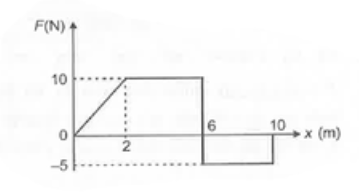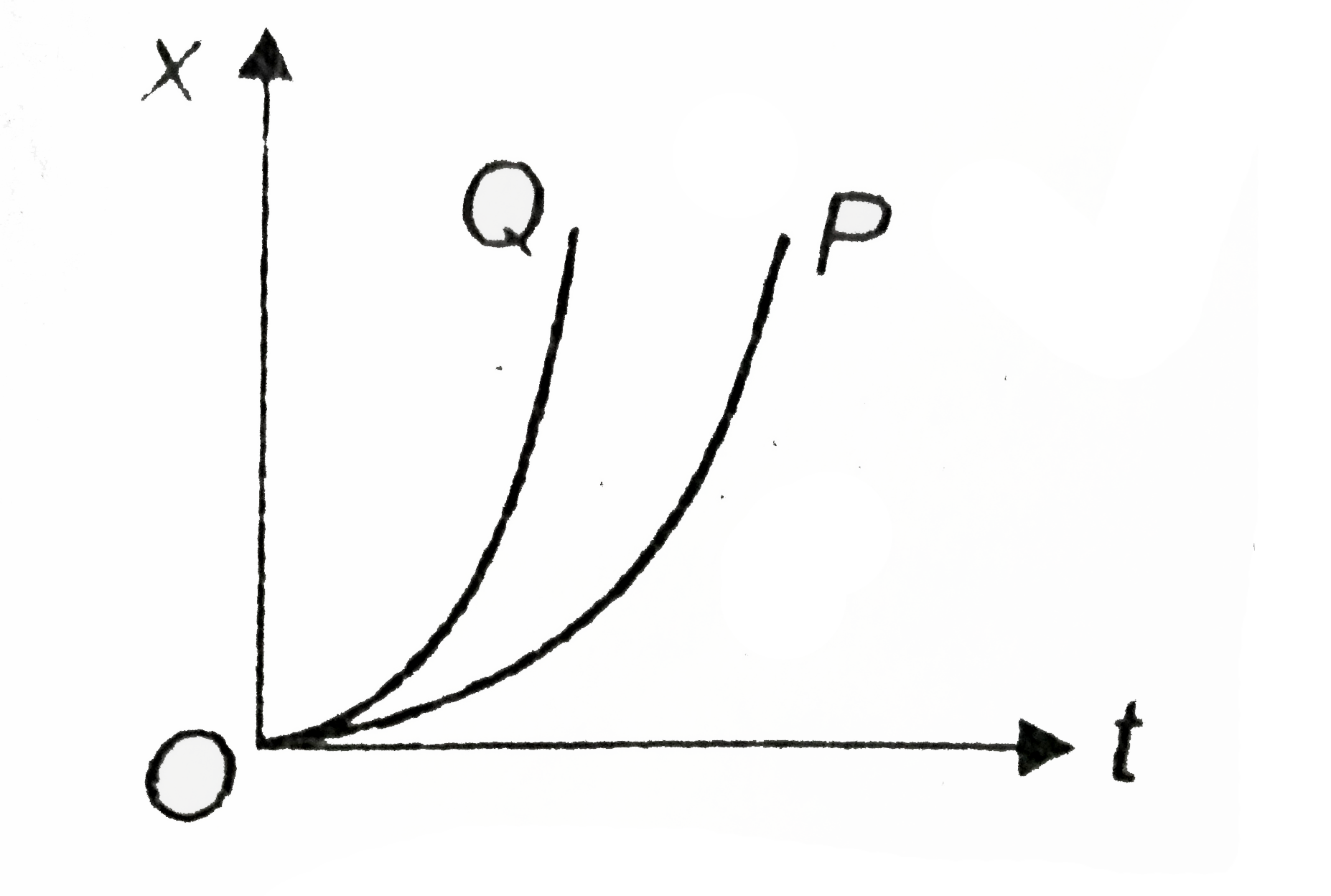
In the figure given below, the position-time graph of a particle of mass 0.1 kg is shown. The impulse at t=2 sec is
v=dxdt=42=2m/s
velocity between t=0sectot=2sec=2m/s
velocity at 2sec=0m/s
Impulse = change in linear momentum
=m(Vf−Vi)=0.1(0−2)=−0.2kgms−1

Similar Questions
In the figure given below, the position-time graph of a particle of mass 0.1kg is shown. The impuslse at t=2 sec is

View SolutionIn the figure given below, the position time graph of a particle of mass 0.1kg is shown. The impulse at t=2 sec is

View SolutionIn the figure, the position time graph of a particle of mass 0.1 kg is shown. The impulse at t=2 second is :

View SolutionThe velocity − time graph of a particle is as shown in figure

View SolutionThe figure shows the position time graph of a particle of mass 40 kg. What is the force acting on the particle of 0<t<4 s

View SolutionThe position - time graph for a particle is shown in fig. Then in the time interval of (0, 6sec)

View SolutionThe force versus position (F-x) graph of a particle of mass 2 kg is shown in the figure. If at x = 0 velocity of particle is 2 m/s then velocity of the particle at x = 8 m will be

View SolutionFigure shows the position-time graph of a particle of mass 0.04kg. Suggest a suitable physical context for this motion. What is the time between two consecutive impulses received by the particle? What is the magnitude of each impulse?

View SolutionFigure shows the position-time graph of a particle of mass 0.04kg. Suggest a suitable physical context for this motion. What is the time between two consecutive impulses received by the particle? What is the magnitude of each impluse?

View SolutionThe position-time graph for two particles P and Q moving on x-axis is shown in the figure. Then

View Solution